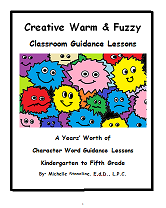History of Sandplay Therapy
by #2 Summer 2014
(Mercer University )
#2
The History of Sandplay Therapy
Mercer University
There are many different theoretical perspectives that counselors use when performing therapy with clients. What is most important is not the theoretical orientation but using a perspective that is understandable and fits the counselor’s personality and way of viewing the world. One method of conducting therapy is through play therapy; a type of therapy that uses toys for children to express themselves. A subtype of play therapy is sandplay or sand tray therapy, which is similar to play therapy in that small toys or miniatures (figurines) are placed into a sand tray by the client to represent content, feelings, etc. This method can be used with adults as well as with children. The following paper will present a brief history of sandplay or sand tray (used interchangeably) therapy.
As with all theories, sandplay has historical founders that were instrumental in developing the foundation of the theory behind the proces. Margaret Lowenfeld is popularly known for observing her children’s play with a popular board game that utilized miniatures. From this observation she decided to use the miniatures with her client’s in the sand (Turner, 2014). Lowenfeld would continue to use the miniatures with her clients and named her manner of therapy Sandplay the World Technique. The idea behind sandplay is for client’s to represent their world within the sand tray. Many different types of miniatures can be used such as but not limited to: people, plants, animals, buildings, spiritual symbols, etc. According to Bradway and McCoard (1997) “sandplay is a form of active imagination, but the images used in sandplay are concrete and tangible rather than invisible and intangible (p.7). The use of an active imagination and tangible objects creates a safe environment for clients to process on their own terms.
Dora Kalff created her version of sand tray therapy named Sand Tray Therapy where she slightly differed from Lowenfeld in that she believed in the client creating several trays and delaying interpretation of said trays. She was a follower of Jungian Therapy and believed that the therapist was the silent witness in the process (Bradway and McCoard (1997); Turner, 2014).
One of the aspects that I like most about sandplay therapy is that it is versatile in that it can be used with adults as well as children. According to (Castellana & Donfrancesco, 2005) more Jungian analyst are attracted to sandplay and are using it with both children and adults. I think that the sandplay method is very useful with clients who do not want to talk, with clients who have experienced trauma, and with clients who want to process but are fearful; this sand gives them a way to process yet having a buffer between themselves and the sand tray. I have used this method with many child clients and several adults as well. I enjoy the fact that the client is in control of how much they share or process. With traditional talk therapy clients may feel forced or pushed into talking and processing, but the sand tray experience allows them to have total control of how much and how long they process; in essence the client has his or her foot on the gas pedal and they can slow down as needed.
I think that sandplay therapy is effective and I like the fact that the client does not have to have any particular skill in order to utilize this therapy. However, using this method may prove to be most difficult with child client’s who do not normally engage in play and adults who may not understand the process and think that it is silly to play in the sand. When I use this technique it is important that I explain the process of sandplay and the benefits such as faster processing and having control of the process. Also, sandplay is not designed for any one particular disorder or behavior, it can be used with a range of problems or disorders.
I will continue to use the sandplay method, both for myself and with clients. I will continue to study and learn about symbolism and sandplay research.
How to Use The Sand Tray for Sand Tray Therapy Link:
More Ideas on Sand Tray Therapy
For more free ideas on creative therapy visit the link below:
Creative Counseling 101.com Home
References
Bradway, K. & McCoard, B. (1997). Sandplay-silent workshop of the psyche. Routledge, New York, NY.
Turner, B. A. (2014). The history and development of sand sandplay. Retrieved http:// www.sandplay.org/history.htm
Click here to read or post comments
Disclaimer: This website and its content is intended for trained licensed mental health professionals and school certified mental health professionals to use for their clients / students at their own discretion.
*If you ignore the disclaimer above are using these techniques on yourself and you feel any discomfort or upset it is highly suggested that you seek out a licensed mental health professional immediately.
"Beyond Art Therapy" is the concept from Dr. Stangline that combines all creative fields in therapy. It is not the traditional "art therapy" but goes beyond to include sand tray therapy, play therapy, mindfulness, meditation, color therapy, cognitive behavioral therapy, and a vast majority of other therapies.
For any other type of mental health emergency call your local 911 / Police Number immediately.
Dr. Stangline does not offer advice / suggestions to anyone who is not a professional mental health provider, or a student who is studying this field and has questions about mental health programs of study.
See our Exciting Selection of eBooks:
Award Winning:
Creative Counseling 101 eBook
Our Best Seller!
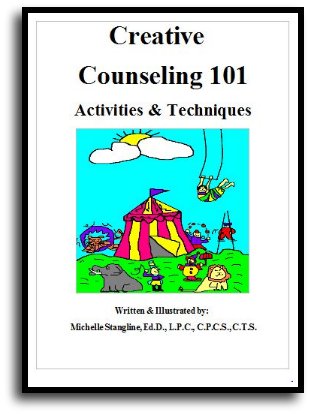
Step By Step Therapy:
Learn how to be a more Creative Therapist with the Book that started it all!
- Graduate School Counseling book used by hundreds of graduate counseling students!
- Includes full color reproducible worksheets with most activities.
- Winner of the Counselor Writer of the Year Award, 2011, Georgia Regional Award
Download Your Copy Today Only $39.95:
See Creative Counseling 101 eBook Information Here:
Get the Set
of all four
eBooks for only $98.95:
An incredible collection of how to do therapy eBooks!
A $159.80 Value,
You Save Over $60!
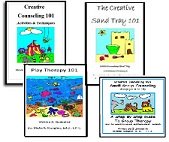
Get your complete set of the Creative Counseling 101.com eBooks by Dr. Michelle Stangline for only $98.95, that's less than $25.00 per eBook (Regular Price is $39.95 for each eBook.).
Your complete set includes:
- Creative Counseling 101
- Creative Group Counseling 101
- Creative Play Therapy 101
- Creative Sand Tray 101
For more information click the link below:
See Complete Set of eBooks For Sale Here:
New!!! "Beyond Art Therapy" 101 eBook
Over 300 pages of Beyond Art Therapy activities and techniques. Learn what I teach graduate counseling students!
See the link below for more information.
Only $39.95
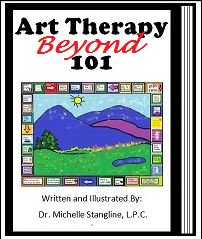
See More Invividual eBooks For Sale:
Sand Tray Therapy 101 eBook:
Learn how to do Sand Tray Therapy or enhance your skills.
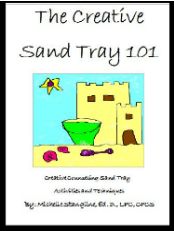
Play Therapy 101 eBook
Learn how to do play therapy or enhance your skills.
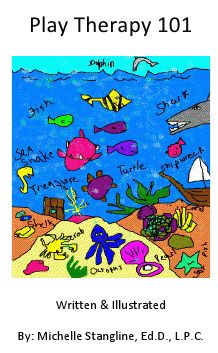
Small Group Counseling eBook For Sale:
Learn how to do creative group therapy and enhance your skills.
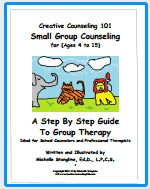
School Counselor Guidance Lesson & Social Stories eBook for sale:
Get a year's worth of school counselor guidance lessons with "Creative Warm & Fuzzy Classroom Guidance Lessons eBook". Introduce your students to the "Warm & Fuzzy Way". Click the link below for more information:
Warm & Fuzzy School Counselor Guidance Lessons eBook
